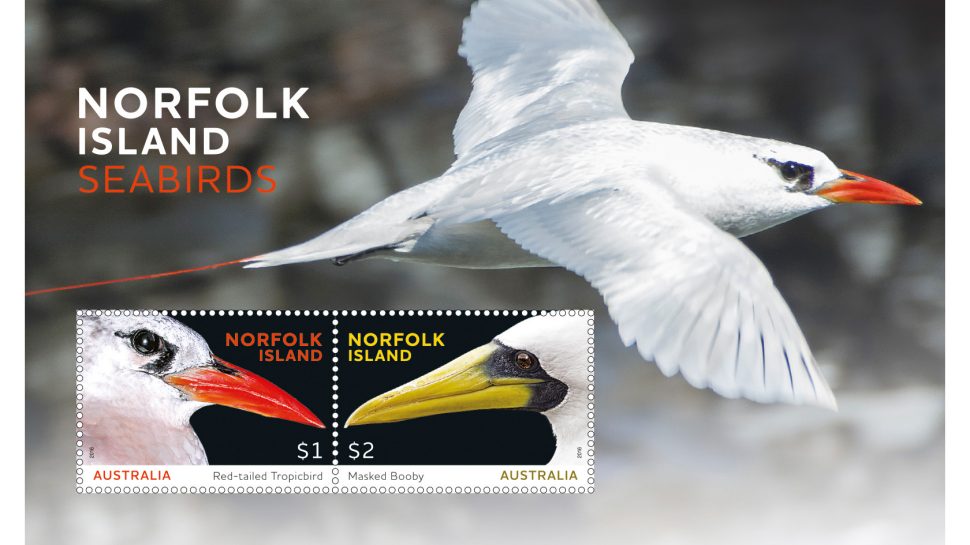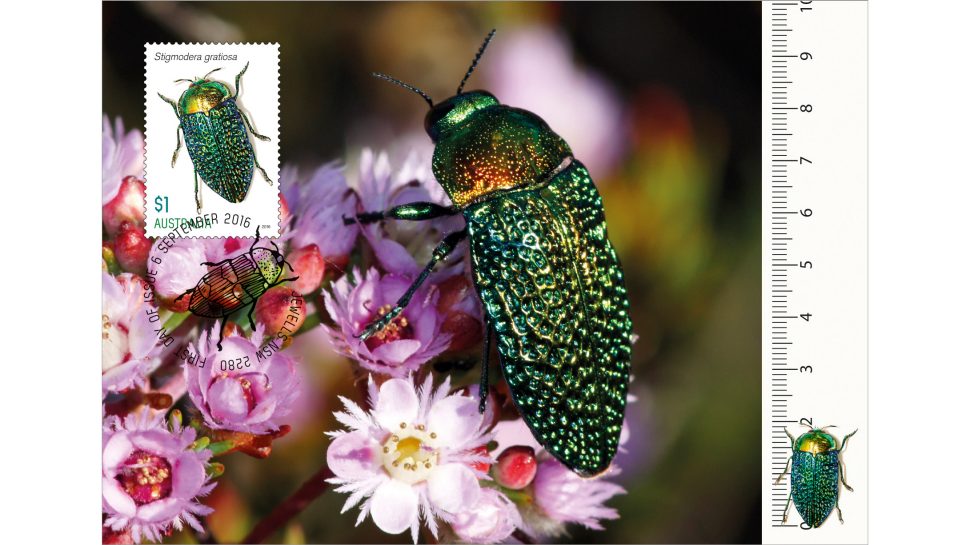In this fifth and latest instalment in our series of articles on Australian stamp production, we look into the world of product development. Cheryl Roy is the Philatelic Category Manager at Australia Post. We spoke to her about how the Category team works to produce an exciting mix of products for collectors, postal users and the general public – from attractive stamps to embellished minisheets, striking stamp and coin covers, and licensed stamp packs featuring your favourite characters and sports teams.
What does the role of Category Manager entail?
The Category Manager is ultimately responsible for developing a sustainable stamp and stationery issue program, one that will please our collectors and general postage customers and contribute to the sustainability of the Australian Philatelic industry.
What are the main responsibilities of the Category team?
The responsibilities of the Category team are many and varied:
- Collaborating with the content developers to create our annual stamp program, which is used as the basis for product development.
- Developing a product mix for the stamp program that will meet the requirements of our Philatelic customers and the postal user.
- Interacting with the Philatelic Design Studio and the content developers to ensure that our products meet visual, brand and collector expectations.
- Working closely with the Australia Post Domestic and International teams to ensure that stamps are available to meet their postage determinations.
- Developing a licensed program to complement the annual Philatelic program and to recognise major events and anniversaries of licensed entities, while also encouraging new avenues for philatelists.
- Partnering with external organisations like the Royal Australian Mint (RAM), The Perth Mint, the Reserve Bank of Australia and Downies to provide our customers with an exciting range of collectable products.
- Working closely with the Australia Post Philatelic production team at Sprintpak to produce innovative products that uphold our international reputation as one of the leading philatelic providers.
How do you determine the product mix for each stamp issue?
It all starts with the development of the Stamp and Stationery Issue Program (SSIP), which contains a comprehensive list of the products associated with each stamp release, from core products that are released with every issue to additional products such as stamp and coin covers and prestige booklets. The SSIP is developed once the Annual Stamp Program is approved by the Australia Post Board. A wide range of factors, including the expectations of our Philatelic collectors, significant anniversaries and commemorations and the needs of the general postal user are taken into account when we develop our program.
The core products for any Australian and Australian Antarctic Territory stamp issue are the First Day Cover, Stamp Pack and Maxicard and of course the stamps themselves. For our Australian Territories program (Christmas Island, Cocos (Keeling) Islands and Norfolk Island), the First Day Cover is the only core product in addition to the stamps, apart from our ever-popular annual Lunar New Year stamp issue in which we have an array of products to help satisfy our enthusiastic collectors.
Your team is also responsible for the annual Impressions catalogue. How do you develop those products and how do they relate to the stamp program?
The variety of products in the Impressions catalogue is developed throughout the year. The Category team work with many internal and external merchants to develop a range of exciting, innovative and exclusive limited edition products to appeal to existing collectors and to entice new ones.
The main purpose behind the Impressions range is to hero our beautiful stamp designs and showcase these designs with different print techniques, embellishments and finishes. It is an opportunity to take our stamp designs to a whole new level and push the boundaries of design and print techniques that we otherwise cannot do in our regular stamp issue program. This opportunity is exciting for the wider Philatelic team, as we can provide our collectors with a memorable range of beautiful philatelic products in limited quantities, giving collectors truly rare philatelic treasures.
You liaise with the print production team to determine print quantities and monitor stock levels. How does that process work?
Print quantities are determined by taking into account standing orders from all of our Australia Post outlets, the requirements of mail order standing orders and, increasingly, demand from the ad-hoc and online channels. Previous sales of similar stamp issues are evaluated and the requirements of general postage usage is also taken into account. Our Supply Chain and Finance team assist in monitoring the stock and figures that are used in the calculation of future orders or reprints.
What are some of the main challenges when working in philatelic product development?
Our main challenge is to continually develop new products that extend the basic stamp range. The stamp is our hero and is the basis of everything we do. However, as the stamp plays less of a role in the mail processing arena, we need to extend the life of a stamp through our Philatelic program through innovative design and development and by creating new markets through strategic relationships.
What are the most enjoyable aspects of working with philatelic products?
The Philatelic area is unique as we have a total end-to-end process. We develop, design, produce and sell, and the whole Philatelic team contribute significantly to that. We take great pride that all our products are of high quality and our team is recognised worldwide for design and production excellence. I am very proud and honoured to work in Philatelic. We all work with such a beautiful product.
In our next instalment, we will take a look at the printing stage of the stamp production process.
View our previous articles in the series:
How Australia Post stamps come to be
How Australia Post stamps come to be: Program development
How Australia Post stamp come to be: Research and content
How Australia Post stamps come to be: Design
This article was produced at the time of publication and will not be updated.





